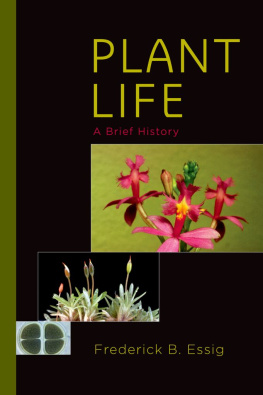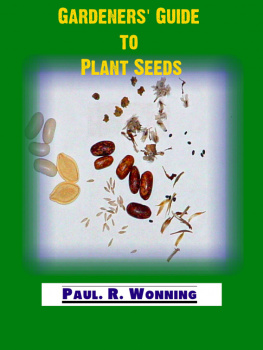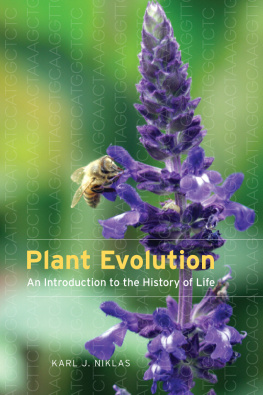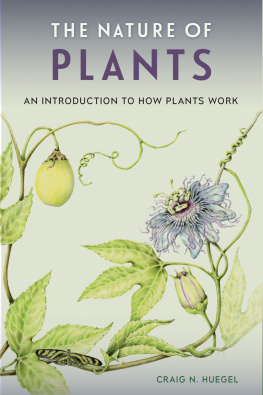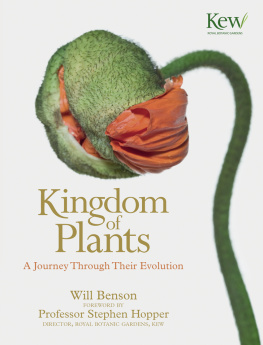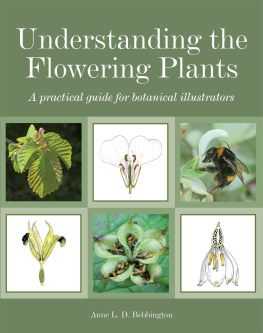Plant Life

Oxford University Press is a department of the University of Oxford. It furthers the Universitys objective of excellence in research, scholarship, and education by publishing worldwide.
OxfordNew York
AucklandCape TownDar es SalaamHong KongKarachi
Kuala LumpurMadridMelbourneMexico CityNairobi
New DelhiShanghaiTaipeiToronto
With offices in
ArgentinaAustriaBrazilChileCzech RepublicFranceGreece
GuatemalaHungaryItalyJapanPolandPortugalSingapore
South KoreaSwitzerlandThailandTurkeyUkraineVietnam
Oxford is a registered trademark of Oxford University Press in the UK and certain other countries.
Published in the United States of America by
Oxford University Press
198 Madison Avenue, New York, NY 10016
Oxford University Press 2015
All rights reserved. No part of this publication may be reproduced, stored in a retrieval system, or transmitted, in any form or by any means, without the prior permission in writing of Oxford University Press, or as expressly permitted by law, by license, or under terms agreed with the appropriate reproduction rights organization. Inquiries concerning reproduction outside the scope of the above should be sent to the Rights Department, Oxford University Press, at the address above.
You must not circulate this work in any other form and you must impose this same condition on any acquirer.
Library of Congress Cataloging-in-Publication Data
Essig, Frederick B.
A brief history of plant life / Frederick B. Essig.
pages cm
Includes bibliographical references and index.
ISBN 9780199362646
eISBN 9780190266707
1. PlantsEvolution. I. Title.
QK980.E85 2015
581.38dc23
2014028846
This book is dedicated to those who have encouraged, guided, and supported my botanical journey: my father, who planted fruit trees and took me backpacking in the mountains; my mother, who let me out of her sight for a month to backpack around Hawaii after high school; my grandmother, who supplied me with books about plants and introduced me to the wild places of Cape Cod; my high school teacher, Bert Hunt, who showed me wild places from the Grand Canyon to the northwestern Cascades; my children, for tolerating frequent wildflower stops on family vacations; and last but not least my wife, Yau-Ping, who tolerated my many absences from home to botanize around the world and who provided encouragement and support throughout this project.
CONTENTS
I would like to thank all of those who read and commented on portions of the manuscript during its development: Gordon Fox, K. T. Scott, Rebecca Pinkerton, Monica Metz-Wiseman, and Genevieve Essig. Special thanks go to Merilyn Burke and Andrew Smith for invaluable help in deciphering copyright law and tracking down copyright owners. I thank also the families of William H. Brown and Gilbert M. Smith, particularly Dr. Jennifer Brown and Mrs. Susan Pellet Minamyer, for granting liberal use of drawings from the classic botanical textbooks of these authors, and all the others who granted permission to use illustrations from their own or family members botanical works.
This book describes the evolution of plant structure, a task that would be virtually impossible without the inclusion of a large number of illustrations. In this day and age, one might turn to color photography for this task, but for the scale of this project, that would have been prohibitively expensive. Botanical line art can achieve the same goals, quite often with superior results. In the hands of a skilled artist, details of plant structure can be portrayed accurately, clearly, and surprisingly lifelike.
The rich tradition of botanical art goes back centuries, developed and refined when photography was not an option, or when photos could be published only in black and white with mediocre quality. One of the goals of this book was to draw upon and showcase this tradition with some of the best line art ever published. Only when nothing was available for a particular topic have I resorted to my own artistic effort, and failing that, to include a few black-and-white photographs. For the majority of topics, however, superb illustrations were available.
I have made every effort to determine the copyright status of each of the illustration sources and to track down the current holder of the rights. If I have made any errors or omissions in that regard, I extend my apologies to the appropriate party and will make the appropriate amends.
The cited sources of artwork and photographs are listed below:
Awramik, S. 1992. The oldest records of photosynthesis. Photosyntheis Research 33:7589.
Barton, W. P. C. 1818. Vegetable Materia Medica of the United States. H. C. Carey & Son: Philadelphia.
Beck, C. B. 1962. Reconstruction of Archaeopteris and further consideration of its phylogenetic position. American Journal of Botany 49:373382.
Brown, W. H. 1935. The Plant Kingdom. Ginn & Co.: Boston and New York.
Coulter, J. M., C. R. Barnes, and H. C. Cowles. 1910. A Text-book of Elementary Botany for Colleges and Universities. American Book Co.: New York.
Flora of Pakistan, 2008. http://www.efloras.org/object_page.aspx?object_id=115716&flora_id=5.
Ganong, W. F. 1916. A Textbook of Botany for Colleges. MacMillan: New York.
Grownative, www.grownative.org, a program of the Missouri Prairie Foundation
Gray, A. 1879. Grays Botanical Textbook, vol. 1. Structural Botany. Iveson, Blakeman & Co.: New York and Chicago.
Hartog, M., 1906. In: S. F. Harmer (ed.). The Cambridge Natural History vol. 1. Protozoa, p. 9. MacMillan Co.: London.
Haupt, A. 1953. Plant Morphology. McGraw-Hill: New York.
Kerner von Marilaun, A., English edition by F. W. Oliver. 1895. The Natural History of Plants. Henry Holt & Co.: New York. (cited as Kerner & Oliver).
LeMaout and Decaisne. 1876. A General System of Botany. Longmans, Green & Co.: London.
Masclef, A. 1891. Atlas des plantes de France. Paul Klincksieck: Paris.
Mauseth, J. 2014. Botany, 5th Ed., Fig. 23.1. Jones & Bartlett. Burlington, MA.
Oltmanns, F. 1905. Morphologie und Biologie der Algen. Gustav Fischer: Jena, Germany.
Raven, P. H., R. F. Evert, and S. E. Eichhorn. 1999. Biology of Plants, 6th Ed. W. H. Freeman & Co.: New York.
Sachs, J. 1874. Lehrbuch der Botanik. 4th ed. Wilhelm Engelmann: Leipzig.
Seward, A. C. 1917. Fossil Plants: For Students of Botany and Geology. University Press: Cambridge.
Smith, G. M. 1938. Cryptogamic Botany. McGraw-Hill: New York.
Sturm, J. G. 1796. Deutschlands Flora in Abbildungen. C. G. Preuss: Nrnberg.
Thom, O. W. 1877. Textbook of Structural and Physiological Botany. John Wiley & Sons: New York.
Thom, O. W. 1885. Flora von Deutschland, Osterreich und der Schweiz. Friedrich von Zezschwitz: Gera, Germany.
Transeau, E. N., H. C. Sampson, and L. H. Tiffany. 1940. Textbook of Botany. Harper and Brothers: New York.
Wikimedia Commons (http://commons.wikimedia.org/); posted images licensed by Creative Commons (http://creativecommons.org/licenses/by-sa/3.0/legalcode).
Charles Darwin described the evolutionary origin of flowering plants as an abominable mystery. According to the Merriam-Webster dictionary, the word abominable encompasses just about any unpleasant adjective you can think of: hateful, disgusting, disagreeable, etc. Apparently the scientific world felt this way about the hairy man-apes reported from the Himalayas, but what was it about the flowering plants that evoked such an outcry of annoyance from the father of evolutionary theory?

